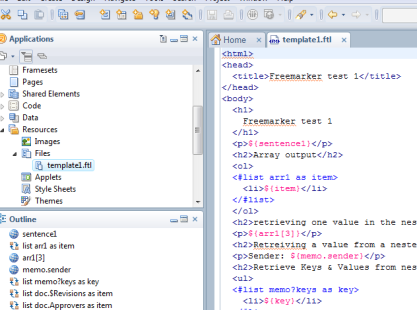When using LS2J to utilize Java classes from within LotusScript, you may be faced with needing to declare and bind to a method explicitly using its JNI signature. A common case where this is necesary is when your Java class has multiple overridden methods and you need to explicitly use one of them. Instead of wrestling with the JNI syntax, you can use this handy function to bind to the object and print out the signatures for you to copy:
A sample output from the NotesLog looks like this:
Kindly rate this post using the star system below and/or rate my authoring abilities on Scribnia.

 Got the Freemarker Eclipse Editor plugin to work inside of Domino Designer. Now I can edit and save a
Got the Freemarker Eclipse Editor plugin to work inside of Domino Designer. Now I can edit and save a